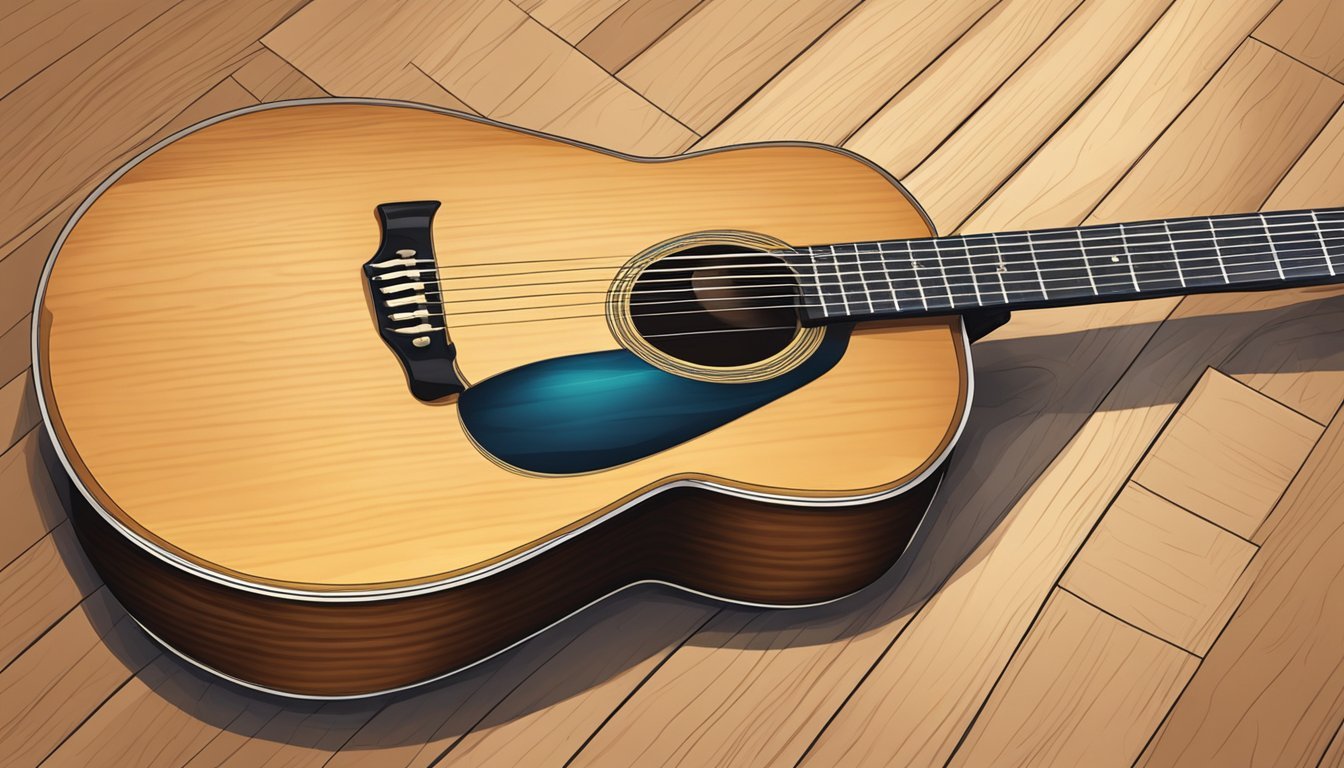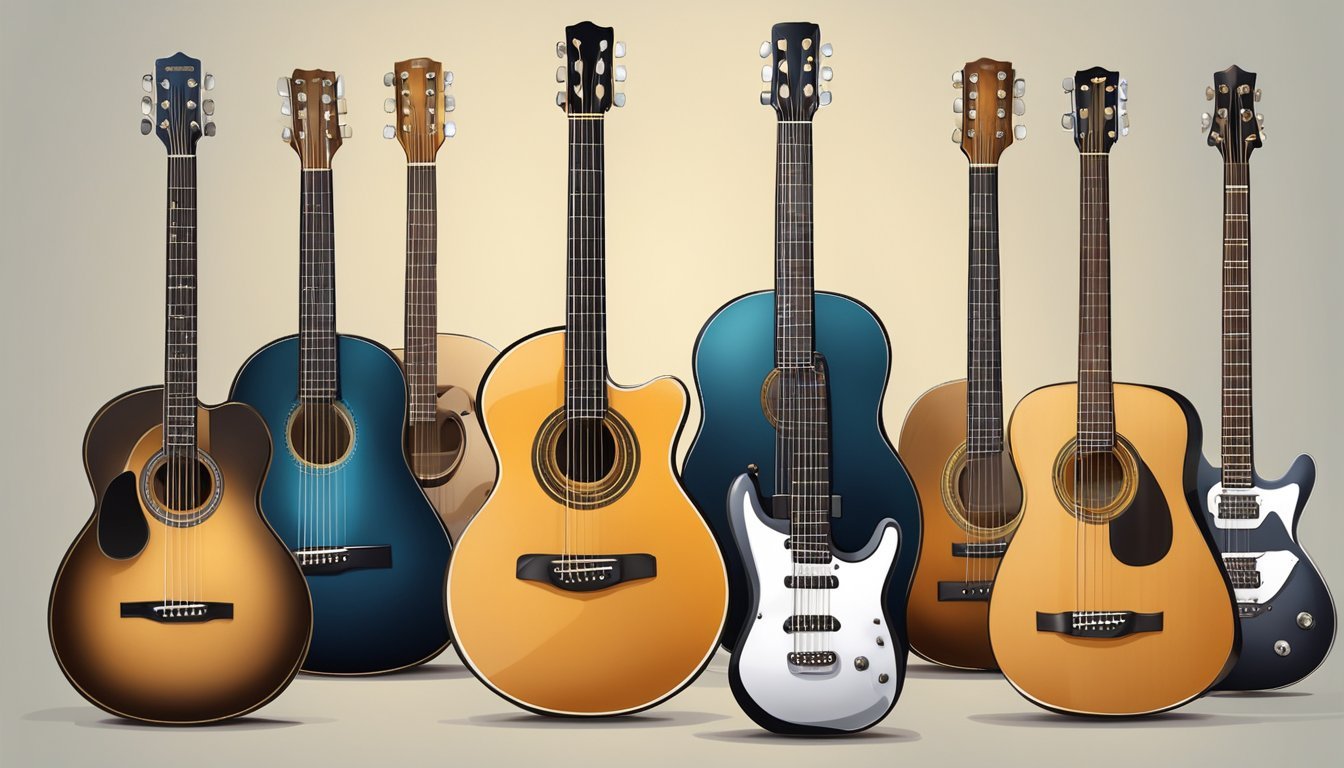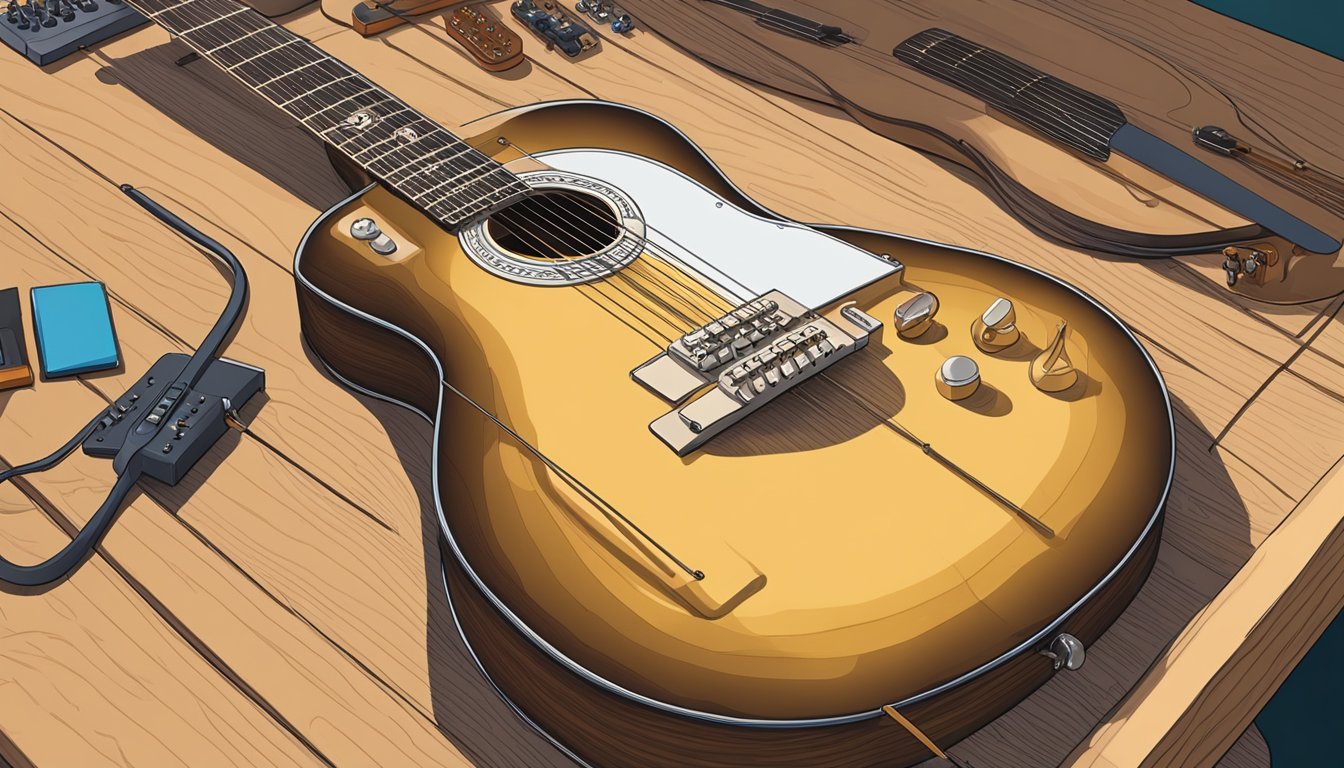If you’re curious about the number of strings on a guitar, you’re in the right place. Most guitars typically have six strings, which is the standard for many styles of music.
But did you know there are guitars with four, seven, eight, or even twelve strings? Each type brings a unique sound and feel to your playing experience.

Understanding how many strings different guitars have can open up a whole new world of musical possibilities.
From the classic six-string acoustic to more specialized instruments, knowing your options helps you choose the right guitar for the sound you want.
Let’s explore the various types of guitars and what difference the number of strings can make.
Key Takeaways
- Standard guitars usually have six strings, but variations exist.
- Unique guitars can have four, seven, eight, or even twelve strings.
- The number of strings affects sound and playing styles across genres.
Understanding Guitar Strings
Guitar strings are essential for creating music.
They vary in number, type, and tuning, which can significantly affect the sound and playability of your guitar.
Here’s a closer look at the standard six-string setup, variations, and how they impact your playing experience.
The Standard Six-String Guitar
Most guitars have six strings, which is the most common configuration.
The strings are typically tuned to E-A-D-G-B-e, from the thickest to the thinnest.
This tuning is often referred to as “standard tuning.”
Each of these strings contributes to various musical elements like scales and chords.
For example, strumming an open chord uses all six strings.
This setup makes it easier for beginners to learn songs and progress through different genres.
Variations in String Numbers
While six strings are standard, there are variations like the 12-string guitar.
A 12-string has pairs of strings for each note.
This setup creates a fuller, richer sound but can be harder to play.
You might also come across guitars with fewer strings, such as 4-string bass guitars or even 7-string guitars, which can expand your musical range.
Each variation offers different tuning possibilities, allowing you to explore unique sounds.
Depending on the type of guitar you choose, you might play in different styles or genres.
Impact of Strings on Tone and Playability
The type of strings you use can change the sound of your guitar significantly.
For instance, metal strings usually provide a brighter tone, while nylon strings give a softer, warmer sound.
Also, string gauge affects playability.
Thinner strings are easier to press down but may produce less volume, while thicker strings often create a richer tone but require more finger strength.
Your choice impacts not just sound but also how comfortably you can play different chords and scales.
Understanding these details helps you make informed choices about your guitar setup and playing style.
Types of Guitars

Guitars come in many shapes, sizes, and string counts.
Each type offers a unique playing experience and sound.
Let’s explore the main categories you might encounter.
Electric Guitars and Their Strings
Electric guitars often have six strings, but you can also find variants with seven or eight strings.
These additional strings allow for deeper tones and more complex chords.
The strings are usually made from steel, which gives them a bright, sharp sound.
You’ll also find electric guitars using different pickups that can shape the guitar’s sound even more.
Whether you’re playing rock, jazz, or metal, there’s an electric guitar that fits your style.
Acoustic Guitars: From Classical to 12-String
Acoustic guitars mainly feature six strings, but you can also explore classical guitars that have nylon strings for a softer tone.
If you’re looking for something richer, consider a 12-string guitar.
This type has pairs of strings for each note, resulting in a fuller, more harmonic sound.
Many acoustic guitars are constructed from wood, which influences their acoustic qualities.
You can pick from various styles, including the Spanish guitar, which has a distinct playing technique.
Extended-Range and Exotic Guitars
Extended-range guitars are popular among advanced players.
They often feature seven, eight, or even more strings.
These extra strings help you reach lower and higher notes, giving you more versatility.
You might come across bass guitars as well, typically with four or five strings, focusing on the lower frequencies.
For something unique, check out harp guitars and double-neck guitars, which allow for even more string combinations and playing techniques.
Each type offers a special sound that can elevate your music.
String Tuning and Configuration

When you pick up a guitar, understanding string tuning and configuration is key to getting the best sound.
There are standard ways to tune, as well as many variations suited for different music styles.
Let’s explore the basics of standard tuning and some alternative options.
Standard Tuning and Its Variations
The most common tuning for a standard guitar is called E standard tuning.
In this setup, the strings from the lowest (6th string) to the highest (1st string) are tuned to E, A, D, G, B, and E. This tuning helps you easily play chords and melodies, making it beginner-friendly.
For six-string guitars, you might find slight variations like tuning down to low B for heavier sounds.
Players of bass guitars typically tune their strings an octave lower than standard guitars.
There are also 12-string acoustic guitars, which double each string, creating a richer sound.
If you’re working with nylon strings, like those on classical guitars, the tuning remains the same but the tone is softer.
Alternative Tunings and Their Uses
Alternative tunings can open new sounds and possibilities.
For instance, Drop D tuning lowers the 6th string down to D, making power chords easier to play and changing the guitar’s overall feel.
Other popular options include Open G or Open D tuning, often used in folk and blues music for slide guitar techniques. Seven-string guitars add a low B string, while eight-string guitars often feature both low B and a higher string, letting you explore deeper sounds and extended range.
For unique configurations, consider options like multi-neck guitars that mix different tunings, or even instruments like mandolins.
These variations not only provide versatility but also help you create your distinctive sound.
Musical Genres and Guitar Strings

Different guitar strings can influence the sound and style of music you play.
Each genre has its own preferences for string types to achieve the desired tone.
Let’s break down how string types impact various musical styles.
Influence of String Types Across Genres
In rock music, you often find players using nickel-plated steel strings.
They offer a punchy tone, perfect for distortion effects.
Famous guitarists like Jimmy Page have made this style iconic.
For blues, players might choose heavier gauge strings for a thicker sound.
This gives a more powerful tone that enhances fingerpicking and percussive techniques.
If you’re into country or folk, consider lighter, bright-sounding strings like nylon or bronze.
These strings enrich melodies, making them perfect for strumming with a plectrum or fingerpicking styles.
Iconic Guitars and Their Strings in Music History
In music history, certain guitars have defined genres.
For instance, the 12-string guitar is popular in folk music.
It produces a rich, full sound that stands out in acoustic performances.
The Martin guitar brand is often associated with country and folk artists due to its rich tonal possibilities.
These guitars usually have light to medium-gauge strings, allowing for comfortable playability.
Each of these choices not only affects how the guitar sounds but also how you can express your musical ideas.
Choosing the right strings for your guitar can truly elevate your playing.
Frequently Asked Questions
You might have some questions about the number of strings on different types of guitars.
Let’s look at some common inquiries to clear things up.
What’s the usual number of strings on an acoustic guitar?
Most acoustic guitars have six strings.
This is the standard setup, making it easy for players to find a lot of music that fits.
While some guitars feature variations with fewer or more strings, the six-string design remains the most popular among musicians.
This allows for a wide range of musical styles and techniques, making it accessible for beginners and seasoned players alike.
Curious about the variations? Many might wonder, “how many strings does a guitar have? ” to explore the different options available beyond the standard six-string model.
Is it true that some guitars have 12 strings?
Yes, some guitars do have 12 strings.
These 12-string guitars create a fuller sound and are often used in folk and rock music.
Are there any guitars out there with just 4 strings?
Absolutely! There are guitars with just four strings.
A common type is the ukulele, which is quite popular for beginner musicians.
Do classical guitars have a different number of strings from regular ones?
Classical guitars typically have six strings like standard acoustic guitars.
They often use nylon strings, giving them a softer sound.
Can you find guitars with 5 strings, or is 6 the standard?
Five-string guitars do exist, but they’re less common.
You’ll usually find six strings as the standard for most guitar types.
How many strings do those fancy Spanish guitars come with?
Fancy Spanish guitars, often called flamenco guitars, usually have six strings.
They are designed for a specific style of playing that emphasizes rhythm and technique.

